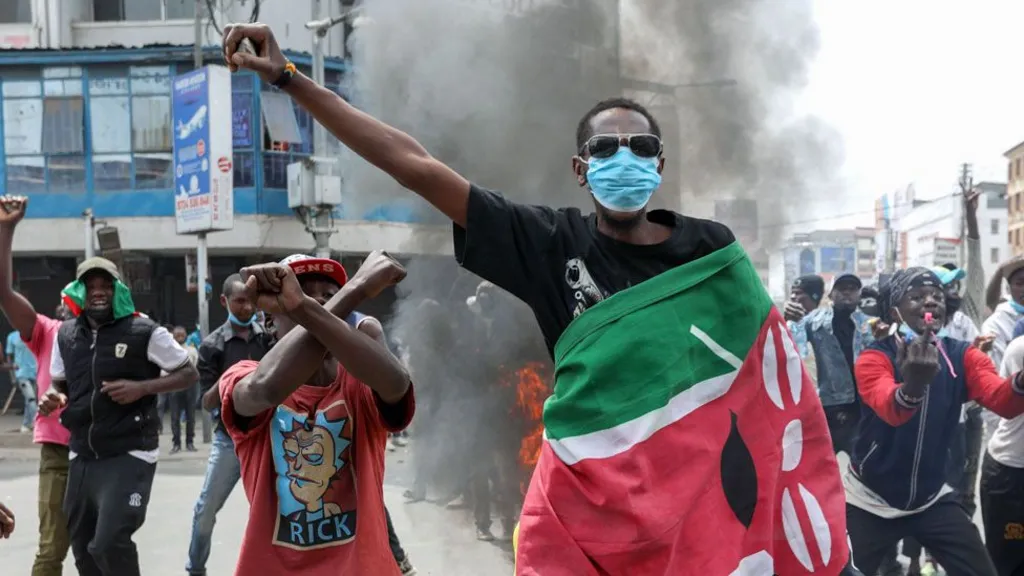Kenyan police have fired tear gas in the capital, Nairobi, and the coastal city of Mombasa to disperse anti-government protests.
In both city centres many businesses have remained closed. Demonstrators have also taken to the streets of other cities including Kisumu.
Human rights groups say since the protests against a controversial finance bill began two weeks ago 39 people have been killed by security forces.
President William Ruto has since dropped the proposed tax increases – but the demonstrations have morphed into calls for him to resign and anger over police brutality in the most serious crisis of his presidency.
The scale of demonstrations are smaller than last week’s, but chaotic scenes have been witnessed in Mombasa, where cars were seen burning as protesters clashed with police.
In Nairobi there is a huge security presence with running battles along some of the main roads leading to the centre. Groups of protesters lit fires and threw stones at police.
In the central business areas of Nairobi and Mombasa some shop-owners have hired vigilantes to patrol with clubs to guard against looting.
Astin Kibowen, 21, who is guarding the music shop where he works in Nairobi, told the BBC he wanted the president “to listen to our cries, to our voices”.
Since President Ruto came to power two years ago promising to revitalise the economy, Kenyans have been hit by a cost-of-living crisis with more taxes on salaries, fuel and on gross sales.
Kenya to borrow more after new taxes withdrawn – president
Was there a massacre after Kenya’s anti-tax protests?
Protesters set fire to Kenya’s parliament – but also saved two MPs
On one of the main streets in downtown Nairobi, activists placed empty coffins in front of riot police to draw attention to their excessive use of force during the countrywide protests.
The state-funded Kenya National Commission on Human Rights (KNCHR) says most protesters were killed last Tuesday when MPs voted to pass the bill and huge crowds gathered to demonstrate.
Seventeen people had died in Nairobi and 22 others killed in other parts of the country, it said in a statement on Monday evening.
There had also been 361 injuries, 32 cases of “enforced or involuntary disappearances” and 627 arrests, it said.
Amnesty International says 24 protesters died in the protests. Earlier, the police put the death toll at 19.
An artist has told the BBC she intends to capture the demonstrations as they happened in Nairobi.
“We are mourning the children killed by police. As others chant, I’m doing art. I saw a flag was laid on this man when he was shot last week,” Linda Indakwa, 29, said as she pointed one an artwork where she has set up in a street in the city centre.
BBC/Mercy Juma An artist with her artwork depicting a protester who was shot dead by policeBBC/Mercy Juma
Linda Indakwa is using her art to show the impact of the protests in the capital
KNCHR condemned “in the strongest terms possible the unwarranted violence and force that was inflicted on protesters, medical personnel, lawyers, journalists and on safe spaces such as churches medical emergency centres and ambulances”.
It said the force used against the protesters “was excessive and disproportionate”.
President Ruto said the police had “done their best they could” while speaking at a roundtable interview with journalists on Sunday.
He added that “if there were any excesses” they would be addressed through “existing mechanisms”.
The president also laid out the repercussions of rejecting the finance bill, saying it meant Kenya would have to borrow one trillion shillings ($7.6bn; £6.1bn) just “to be able to run our government” – a 67% increase on what had been planned.
It would also affect the education, health and farming sectors, he said.
